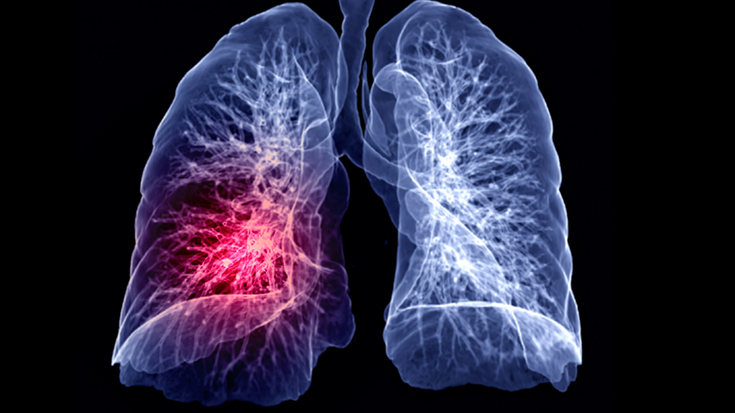
It has been fairly clear for many months now that some people who contract COVID-19 end up suffering from lingering problems. The World Health Organization recently issued the first clinical case definition of the condition and listed breathing difficulties among the most common symptoms.
Will respiratory therapists play a role in the treatment of these patients? Lorin Collins, BS, RRT, PDE, runs the pulmonary rehabilitation program at Atrium Medical Center in Middletown, OH, and she says it’s already happening.
Get ready now
“I do currently have five post-COVID patients,” she said. Two RTs and a cardiopulmonary technician are working with the patients during exercise to help them learn how to breathe properly, use the equipment, and cope with their condition. Most importantly, she continued, they want the patients to “be patient with themselves.”
She believes more and more therapists will get involved in the care of these patients as time marches on.
“I feel that our patients who suffer from this will need more attention and possibly more visits to pulmonary rehab,” she said. “The side effects from COVID are so broad in nature.”
Collins wants her fellow RTs to get ready to help.
“I feel that RTs need to study the effects, both long- and short-term, of COVID,” she said. “It is very important to our patients and our profession to be able to practice at a higher level, a more educational level.”
Having greater RT expertise in this area will benefit patients and the physicians and nurse practitioners who are also dealing with them in their offices, emphasized Collins.
“We can help keep our patients well and knowledgeable and decrease hospital readmissions,” she said.
Many roles to play
AARC Ambulatory and Post-Acute Care Section Chair Adam Mullaly, BSRT, RRT, AE-C, and Chair-Elect Tim Buckley, MSc, RRT, FAARC, agree that RTs can and should get more involved with the long-COVID population. As section leaders, they keep their ears to the ground to find out how the situation is unfolding.
As a long-time therapist with a background in the home care setting, Buckley is hearing that most long-COVID patients can come off of home oxygen three to four months post-discharge. However, his contacts in the pulmonary rehabilitation world tell him that, due to a lack of guidance specific to this patient population, they are treating patients based mainly on criteria used for patients with COPD.
Mullaly also hears that long-COVID patients are weaning off home oxygen fairly quickly. Still, anecdotal evidence suggests many of these patients need more guidance to know when to stop oxygen use.
“Many of them don’t necessarily know when the oxygen is no longer needed, which speaks to discharge communication and patient education, as well as the use of home pulse oximeters, which nowadays should be routine for home oxygen patients,” he said.
As for pulmonary rehab, Mullaly thinks programs need to realize these aren’t your typical patients.
“I have heard that long-haul COVID-19 patients in pulmonary rehabilitation can experience extreme fatigue 24 hours after their session, and therefore the real-time sessions — particularity the initial sessions — need to factor in this potential issue with the exercise prescription in order to not set a patient back,” he said.
Mullaly says one of the main things these patients need is the same thing all pulmonary rehab patients need, and that is reassurance from RTs that they can manage their disease.
“We need to ensure long-haul COVID-19 patients have the knowledge required to do this, and that includes understanding their oxygen levels and oxygen therapy devices, knowing and monitoring symptoms, and following an action plan based on those symptoms,” he said.
Buckley sees an excellent opportunity for therapists to conduct research studies on these patients’ care to help the scientific community determine what works best in ongoing care.
“RTs understand lung disease better than other professions,” he said. “There is a big need for research in long-term COVID.”
Mullaly echoes those sentiments, noting that in regards to oxygen therapy management, pulmonary rehabilitation, and patient education, RTs can and should take the initiative and investigate.
However, one obstacle to greater RT involvement will be the shortage of trained professionals.
“Right now, RTs are burned out and struggling to cope with the ongoing epidemic,” said Buckley.
Here to stay
Long-COVID is likely to be with us for some time to come, as the virus shows little evidence of slowing down, mutations continue to arise, and the uptake of vaccinations remains below optimal levels. As a result, therapists in pulmonary rehabilitation programs and the home care setting and those in physicians’ offices and outpatient clinics may find that this is a new, and unfortunately growing, patient population in need of their expertise.
“RTs should play a big role in the continuing care of these patients,” said Tim Buckley. “First in pulmonary rehab and ultimately in specialty clinics.” He believes that as more RTs are trained at the advanced practice level, that could significantly impact this area of care.
Said Adam Mullaly, “Our knowledge of the respiratory system and clinical expertise in optimizing ventilation via breathing retraining, inhaled medications, secretion clearance techniques, volume expansion therapies, and noninvasive mechanical ventilation make us an obvious and economical choice as physician or provider extenders helping to care for these patients.”





